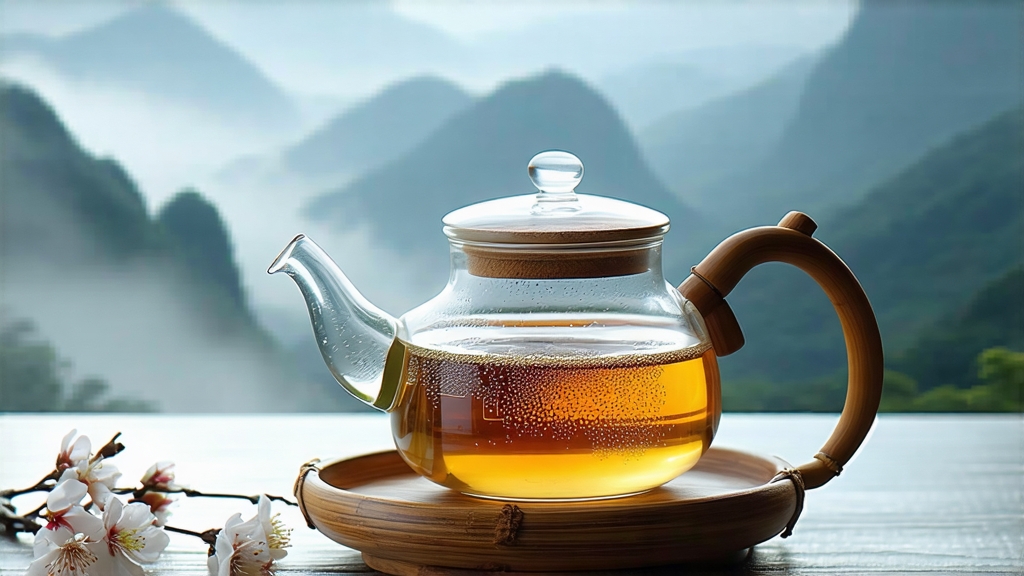
Among the six great families of Chinese tea, white tea is the least theatrical yet the most elusive, and within this quiet lineage Yin Zhen—literally “Silver Needle”—stands as the luminous aristocrat. Harvested only for a few spring mornings when the air is still cool enough to keep the buds closed, Silver Needle is not merely a beverage; it is a capsule of subtropical dawn, a three-thousand-year-old conversation between geology, climate, and human restraint. To international drinkers who meet it for the first time, the tea looks almost too delicate to be real: inch-long buds sheathed in silvery trichomes that catch light like frost on a spider’s web. Once hot water embraces them, the hairs unfurl, the bud stands upright like a miniature ivory spear, and the liquor glows the palest champagne gold, releasing a fragrance that hovers between fresh melon, wet pebble, and a distant hint of pine sap. Understanding Silver Needle is therefore less about mastering technique than about cultivating stillness; the tea rewards the patient and punishes the restless.
Historical whispers place the birth of white tea in the Song dynasty (960-1279), when imperial tribute lists from Fujian mention “white downy cakes” pressed for court shipment. Those cakes, however, were steamed and pounded, a far cry from the sun-withered simplicity we know today. The pivot happened during the late Ming period, when loose-leaf fashion swept China and tea makers around Taimu Mountain discovered that minimal handling preserved both the visual elegance and the innate sweetness of the Da Bai cultivar. By the Qing, Silver Needle had become so coveted that merchants weighed it against silver—hence the name. European ports first recorded it in 1796, when East India clerks wrote of “white hairs floating like thistledown” in the cups of Amoy factors. In the twentieth century the tea almost vanished during the turmoil of wars and trade embargoes; only in the 1970s did state-owned Fujian tea corporations revive ancestral protocols, selecting specific villages—Diantou, Guan Yang, and the high ridges of Fuding—for protected-origin status.
Botanically, Silver Needle is the earliest pluck of the Da Bai (Big White) tea tree, a landrace that evolved on the red-yellow lateritic soils of northern Fujian. The plant’s distinguishing trait is its oversized bud: plump, tetragonal, and densely covered with protective hairs that serve as natural sunscreen against the sudden spring glare. These hairs, called trichomes, are rich in amino acids—particularly theanine—which explains the brothy umami that balances the tea’s otherwise whisper-light body. Because only the unopened bud is taken, the yield per acre is absurdly low: roughly half a kilogram of finished tea for every twelve thousand buds, all picked by thumbnail before nine o’clock while dew still beads the leaf surface. Any later and the bud begins to unfurl, disqualifying it from Silver Needle grade and demoting it to Bai Mu Dan (White Peony).
Crafting Silver Needle is a meditation on abstinence. Once the baskets arrive at the cottage factory, the buds are spread one layer deep on bamboo trays woven from two-year-old mao zhu. The trays rest on racks angled toward the southeast, catching the oblique sun of late morning. For thirty-six to forty-eight hours the tea is left almost untouched; only when the leaf temperature creeps above 32 °C do workers rotate the trays or slide them into shade. This passive withering reduces moisture from 75 % to about 15 %, concentrating sugars and allowing gentle enzymatic oxidation that turns catechins into softer theaflavins. No pan-firing, no rolling, no baking—just the choreography of air and light. The final step is a “slow bake” at 40 °C using charcoal made from local Masson pine; the pine adds a trace of resinous top note without smoke. The entire cycle must finish within five days before the spring rain arrives, because any rehydration would dull the pristine aroma.
Western tea guides often mislabel Silver Needle as “unoxidized.” In truth, the tea undergoes around 5–10 % oxidation, visible under microscope as a reddish rim along the cell wall. This micro-oxidation is what gives Silver Needle its rounded, honeyed finish, distinguishing it from the greener, more astringent style attempted in Y